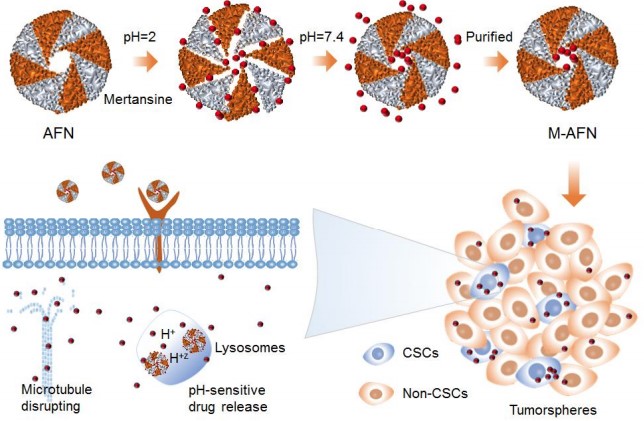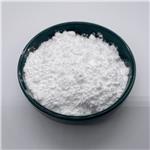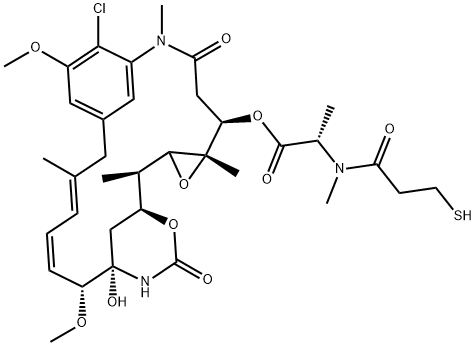The current research on Mertansine
Oct 9,2023
Description
Mertansine is an organic compound with the chemical formula C35H48ClN3O10S. This compound, also known as DM1, is a maytansine derivative. By way of intracellular delivery and release, mertansine inhibits tubulin polymerization and results in mitotic arrest and tumor cell death. As a highly potent microtubule inhibitory drug, It is always used to prepare antibody-drug conjugates (ADC).
TDM-1
TDM-1 (ado trastuzumab-emtansine) is an antibody–drug conjugate consisting of the monoclonal antibody trastuzumab linked to the cytotoxic agent mertansine. It is the first ADC with a non-reducible thioether spacer for clinical trials. Like trastuzumab, T-DM1 inhibits HER2-mediated signal transduction and activates ADCC through binding to the Fc receptor of NK cells. In 2013, the FDA approved Ado-trastuzumab emtansine (Kadcyla®) for the treatment of patients with HER2-positive, metastatic breast cancer who previously received trastuzumab and a taxane, separately or in combination[1].
BIWI 1
Bivatuzumab mertansine (BIWI 1) consists of a highly potent maytansinoid drug DM1 coupled with a humanized mAb against CD44v6 for the treatment of squamous cell carcinoma of the head and neck. After binding to CD44v6, bivatuzumab mertansine can be internalized and the mertansine molecules will be released intracellularly by cleavage of the antibody–mertansine disulfide bonds[2]. The maximum tolerated dose (MTD) was 300 mg/m2 attributable to skin toxicity. The main toxic effects are macular papules, focal blister formation, and skin shedding.
M-AFN
Cancer stem cells (CSCs), also known as tumor-initiating cells, are a rare population of cancer cells that account for the tumor origin, metastasis, drug resistance, and relapse after therapy. Because most current treatments, including chemotherapy and radiotherapy, usually fail to eliminate csc, and many conventional therapeutic agents may accidentally lead to drug resistance and tumor recurrence, Tan et al reported the synthesis of M-AFN using apoferritin nanocages loaded with cytotoxic mertansine. To achieve the purpose of eradicating CSCs in tumorspheres for anticancer therapy. M-AFN can significantly improve their uptake in CSCs-enriched tumor spheres. It was found that the therapeutic effect was achieved only when mertansine was loaded into ferritin nanocages, while no therapeutic effect was detected in blank nanocages and free meransine treatments[3].

SAMPDs
Since Metastatic triple-negative breast cancer is one of the most devastating cancer types, systemic chemotherapy is required. However, these chemotherapeutics have severe toxicity, and a prolonged infusion is usually required to maintain drug exposure within a narrow therapeutic window. Hence, Ran et al. report a novel self-assembling peptide drug conjugate composed of a hydrophilic peptide and mertansine, which are linked together through a disulfide bond. This drug, self-assembling mertansine prodrugs (SAMPDs), could improve the maximum tolerated dose (MTD) of mertansine by reducing free mertansine exposure in the major organs and inhibiting both primary tumor growth and pulmonary metastasis by improving mertansine exposure in the tumors[4]. This strategy could improve the tolerability and efficacy of mertansine against metastatic TNBC.
References
[1] Galdy S, et al. Systemic therapy beyond first-line in advanced gastric cancer: An overview of the main randomized clinical trials. Critical Reviews in Oncology/Hematology, 2015; 99: 1-12.
[2] Senter P, Research and Development of Highly Potent Antibody-Based Drug Conjugates and Fusion Proteins for Cancer Therapy. Planta Medica, 2015.
[3] Tan T, et al. Apoferritin nanocages loading mertansine enable effective eradiation of cancer stem-like cells in vitro. International Journal of Pharmaceutics, 2018; 553: 201-209.
[4] Ran W, et al. Self-assembling mertansine prodrug improves tolerability and efficacy of chemotherapy against metastatic triple-negative breast cancer. Journal of Controlled Release, 2019; 318: 234-245.
- Related articles
- Related Qustion
- Mertansine: Origin, Pharmacokinetics and Antitumor Activity Mar 21, 2024
Mertansine, a potent antileukemic ansa macrolide from Maytenus ovatus, disrupts microtubules, offering significant potential for targeted cancer therapy.
- Synthesis and Bioactivity of Maytansine Oct 11, 2022
Maytansine DM1 is a cytotoxin that is used as the cytotoxic component of antibody-drug conjugates.
- Uses and effect of Mertansine Aug 29, 2022
Mertansine, also called DM1, is a thiol-containing maytansinoid that for therapeutic purposes is attached to a monoclonal antibody through reaction of the thiol group with a linker structure to create an antibody-drug conjugate.
L-Arabinose is a crucial sugar in plant metabolism, playing a role in cell wall flexibility and abiotic stress tolerance.....
Oct 9,2023APISorafenib tosylate inhibits tumor angiogenesis, targeting cell proliferation and angiogenesis pathways. It shows promise as a targeted therapy for advanced cancers.....
Oct 9,2023APIMertansine
139504-50-0You may like
- Crystal Structure of Cerium dioxide
May 22, 2024
- What is the crystal structure of Yttrium oxide?
May 22, 2024
- What is adenine and its function?
May 22, 2024
- Mertansine
-

- $30.00/ BOX
- 2024-03-31
- CAS:139504-50-0
- Min. Order: 10BOX
- Purity: 99
- Supply Ability: 20TONS
- DM-1
-

- $10.00 / 1KG
- 2021-08-31
- CAS:139504-50-0
- Min. Order: 1Kg/Bag
- Purity: 99%min
- Supply Ability: 20000
- N2'-deacetyl-N2'-(3-Mercapto-1-oxopropyl)-Maytansine USP/EP/BP
-

- $1.10 / 1g
- 2021-08-19
- CAS:139504-50-0
- Min. Order: 1g
- Purity: 99.9%
- Supply Ability: 100 Tons min




